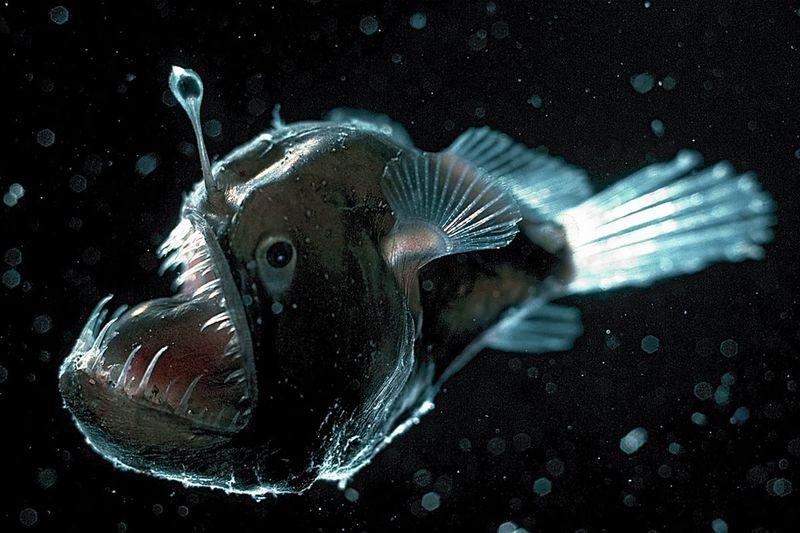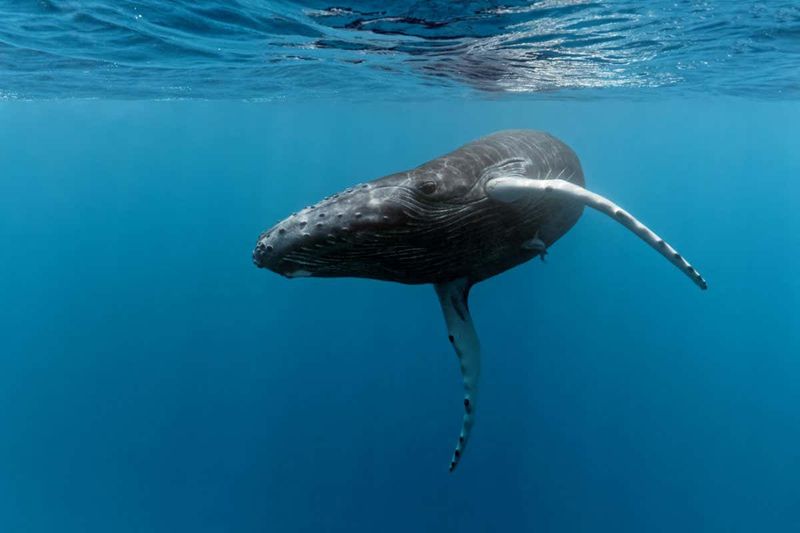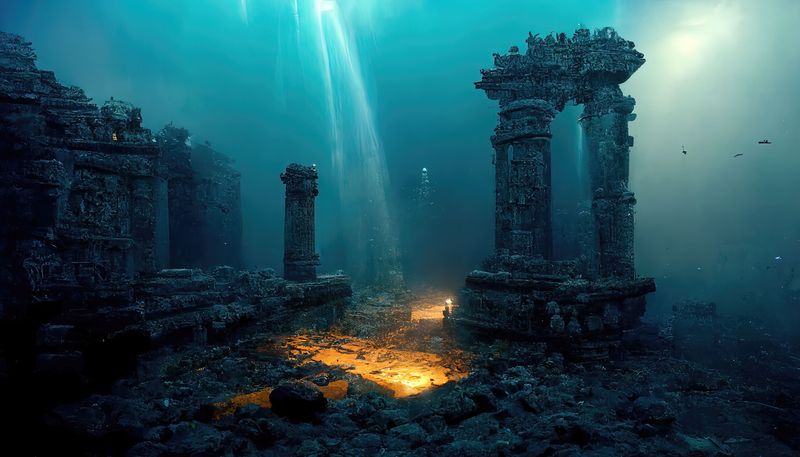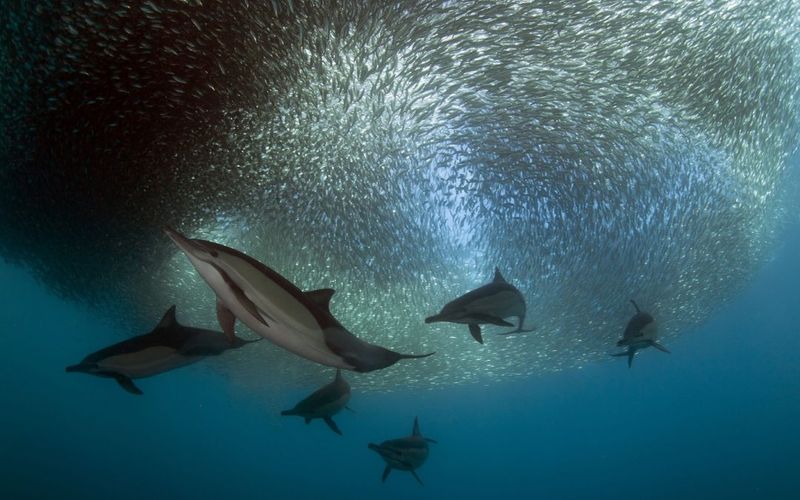The ocean covers over 70% of our planet, yet remains one of the least explored frontiers. Beneath the surface lies a world of hidden wonders, strange behaviors, and unsolved enigmas.
The Deep Sea Zone: Life in Eternal Darkness
Below 1,000 meters, sunlight disappears completely, yet life continues to thrive in the abyssal depths of the ocean. Bioluminescent creatures flash eerie lights in the darkness, while bizarre, alien-like species such as the anglerfish and gulper eel defy biological norms. These organisms have adapted to crushing pressures, freezing temperatures, and complete darkness—but how exactly do they survive in such extreme conditions?
One mystery lies in their metabolism; some species seem to enter a near-stasis mode, requiring minimal energy for survival. Others have unique sensory adaptations, like detecting movement through electrical fields or water vibrations. Scientists are only beginning to understand these adaptations thanks to remotely operated vehicles (ROVs) and deep-sea submersibles. Every dive brings new species and new questions.
What other life forms are hidden in the trenches, and could they hold secrets to human medicine or even extraterrestrial life analogs? The deep sea remains one of Earth’s final frontiers—quiet, pitch-black, and full of unknowns.
The Whale Songs: Decoding Cetacean Communication
Whales produce some of the most haunting and complex sounds in the animal kingdom, from the long, melodic songs of humpbacks to the clicking codes of sperm whales. But what exactly are they saying? Scientists believe whale songs may serve multiple purposes—mating calls, navigation, social bonding, or even cultural transmission.
Some pods in different ocean regions “sing” in distinct dialects, passing them down through generations like oral traditions. Sperm whales, in particular, have been observed using specific click patterns that resemble a rudimentary form of syntax. Could this be the beginning of understanding an alien-like language right here on Earth?
What remains unclear is how whales manage to communicate over such vast distances—sometimes hundreds of miles—especially in increasingly noisy oceans filled with ship traffic and sonar. Researchers are now using AI to analyze these vocalizations, hoping to unlock the grammar behind the sounds. The more we learn, the more it becomes clear: we’re only scratching the surface of cetacean intelligence.
Underwater Ruins: Are There Lost Civilizations Below the Waves?
Tales of lost cities like Atlantis have long fascinated historians and dreamers alike. But recent underwater discoveries have reignited serious questions about ancient civilizations and their connection to the sea. Off the coasts of India, Japan, and Cuba, explorers have found submerged structures that resemble temples, roads, and even entire city grids—some dated to over 10,000 years ago, long before most known human civilizations.
Are these just unusual rock formations, or remnants of societies swallowed by rising seas after the last Ice Age? Underwater archaeology is a growing field, but exploration is hampered by currents, depth, and marine growth covering the structures. Advanced sonar and underwater drones are providing clearer images, yet the origin and purpose of many of these ruins remain uncertain.
If these sites are proven to be man-made, they could rewrite human history as we know it. The ocean may not just hide sea creatures—it may be hiding forgotten chapters of our own past.
The Sardine Run: Nature’s Greatest Underwater Spectacle
Every year along South Africa’s eastern coastline, billions of sardines travel in massive shoals, creating one of the ocean’s most breathtaking events: the sardine run. But what triggers this synchronized migration remains one of marine biology’s biggest puzzles. Some scientists believe it’s related to water temperature and ocean currents; others point to changes in plankton availability.
What’s truly mysterious is how the sardines know when to move—and how they manage to stay so perfectly synchronized. The sardine run attracts a host of predators, including dolphins, sharks, whales, and seabirds, turning the ocean into a swirling cauldron of life and chaos. It’s a natural event so spectacular it’s often compared to the great migrations of the African savannah.
Yet, despite years of observation, the exact cues that spark this marine stampede remain elusive. Understanding the sardine run could not only unlock secrets about oceanic behavior but also offer insights into the broader rhythms of marine life.
The Bermuda Triangle: Truth Behind the Tales
Few places have captured the imagination like the Bermuda Triangle—a region of the Atlantic Ocean where ships and aircraft have allegedly vanished under mysterious circumstances. While many of the stories are exaggerated or based on misinformation, there are still a number of unexplained incidents that keep the legend alive.
Theories range from magnetic anomalies that confuse navigation instruments to underwater methane eruptions that could destabilize vessels. Others propose more fantastical explanations, like portals, alien activity, or time distortions. Scientifically, the area is known for its unpredictable weather and deep ocean trenches, which could explain many disappearances.
However, official data doesn’t show a significantly higher rate of accidents in the Triangle compared to other busy ocean regions. Still, the myth persists, fed by a mix of fact, fiction, and the sea’s natural unpredictability. Whether or not there’s any truth to the more outlandish claims, the Bermuda Triangle remains a symbol of the ocean’s untamed and mysterious power.





